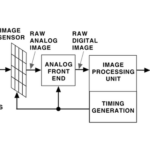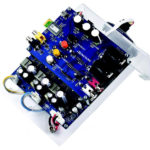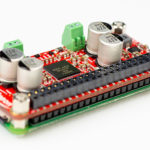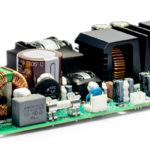In this second part of EEWorld’s “virtual roundtable” discussion on Class D audio, our panelists delve into the impact that the emergence of gallium-nitride (GaN) is having on Class D designs: Where are silicon devices still dominant? What are the performance benefits of using GaN in Class D amplifiers? And what are the anticipated future trends of GaN versus Silicon in Class D amplifiers? Joining us for this virtual roundtable are: Joshua LeMaire (JL), Audio Systems Architect at Analog Devices; Steve Colino (SC), Vice President Strategic Technical Sales with Efficient Power Conversion; and Jens Tybo Jensen (JTJ), Head of Application Engineering for Class D Audio at Infineon Technologies.
JS: Class D audio began its emergence about 15 years ago before GaN was commonly available. Has the availability of GaN in place of silicon had a strong impact in accelerating the adoption of Class D?
SC: Class D Audio advancement usually start at the high end and evolve to the mass markets. GaN has been very successful in these areas and is following the traditional evolution towards the masses.
JTJ: The availability of GaN is not yet having a strong impact on the Class D market. Due to the relative difference in price levels, GaN is still for the select few high-end applications, but Infineon is working to change that in the longer term.
JL: Most of our focus here at Analog Devices is on the medium to lower power Class D amplifiers, we consider low power 5V and below, medium power <20V. GaN becomes interesting in the higher power devices such as >70V or so. I do see elevated interest in GaN at these levels. If the cost and manufacturability maintain their current trends, I can anticipate wider adoption.
JS: Are silicon FETs still the most-often-used switching devices for Class D? Does the use of Si versus GaN vary by power level, or by some other application requirements such as THD?
JL: Yes, silicon is most common, in particular, integrated closed-loop class D amplifiers operating <30V. Certainly, in filterless lower power configuration, silicon will continue to dominate.
SC: There are two metrics, sound quality, and efficiency. For efficiency, power level and speaker resistance determine system voltage and current. Higher power and lower resistance increase the efficiency benefits of GaN. A GaN system can run at 400 W into 4 ohms at 364 kHz in a bridge tied load without a heatsink all day. For sound quality, GaN will deliver much higher sound quality at a marginally higher price. Please be careful when quantifying sound quality. With enough feedback, any amplifier can have wonderful THD performance as THD is measured under static conditions. Music is dynamic, and heavy feedback kills the dynamic response. GaN gives much higher linearity in the open-loop, so it requires much less feedback to accomplish the marketing-driven THD numbers.
Audio reference board using digital input multilevel MERUS class D amplifier IC from Infineon.
Reducing feedback allows the subtle rich color of the music to come through the amplifier. Even reasonably high-end consumer amplifiers kill the mid-range to overcome excessive feedback. This is primarily where the vocals reside, and you lose the color of the vocalist. My daughter is a vocalist, and when listening, and closing my eyes with one of EPC’s demos, it feels like she is singing in front of me. EPC has gone as far as having a purely digital system with zero feedback, and it is the best sounding system that I have ever heard. We would love to the opportunity to demonstrate for those with “golden ears”.
JTJ: For Class D amplifiers, regardless of power level, GaN is superior to Si by all figures of merit – with the notable exception of current implementation cost. This explains why the vast majority of Class D devices are still Si-based. Over time we do, however, expect that the GaN technology will also become commercially viable for more cost-sensitive products outside of the very high-end and slightly niche audio segments.
JS: What are the overall advantages/disadvantages of GaN FETs for Class D?
JTJ: GaN transistors basically elimination Qrr and entail a large reduction in Coss to ensure that higher switching frequencies can be used while delivering superior THD+N results. The inherent low RDS(on)(max) in a small package (as opposed to Si you can lower RDS(on) while shrinking the die size ) ensures that Class D GaN-based amplifiers will eventually provide high audio fidelity in volumes smaller than their Si equivalents and without the need for bulky and heavy heat-dissipating solutions.
JL: advantages: nice, clean, minimal loss switching well into the low MHz is great. You can reduce some of your filtering costs (inductors get expensive) and improve your audio-band quality compared to standard PWM amps switching around 400kHz. Disadvantages are going to be cost and process complexities, as GaN is less mature. (as far as I can tell these days). As you switch those outputs well into the MHz, let’s see how that impacts the complexity of passing EMI in the final product.
SC: There are several fundamental advantages. Sound quality – GaN delivers much higher open-loop linearity requiring less or zero feedback to deliver THD+N levels that marketing requires. This reduces transient intermodulation distortion. You hear the color of the music. Efficiency – GaN has much lower switching losses, so the power dissipation is greatly reduced. Our 400 W into 4-ohm demos can run all day long at full power. With lower switching losses, GaN will run cooler at any power level at any frequency.
GaN FETs for Class D audio from Efficient Power Conversion
In many cases, the heatsink is eliminated. At higher power levels, GaN has dual-sided cooling and is easily heatsinked to a local heatsink or chassis. Thirdly, GaN devices are much smaller than silicon MOSFET competitors. Between device and heatsink size reduction (and heatsink elimination), GaN-based systems will be much smaller while increasing sound quality. This is very important in space-constrained applications such as powered speakers, automotive amplifiers, and television systems. The primary disadvantage is that the amplifier manufacturer must allocate resources to the design. GaN is not a miracle drop in. To take advantage of GaN’s sound quality and efficiency, the power stage must be redesigned. EPC offers assistance in schematic, layout, and thermal design to get the most out of our devices.
JS: Thank you to our three Virtual Roundtable participants for sharing their insights and experience! You might also be interested in reading, Class D Audio Technology, and Applications – Virtual Roundtable (part 1 of 2).











